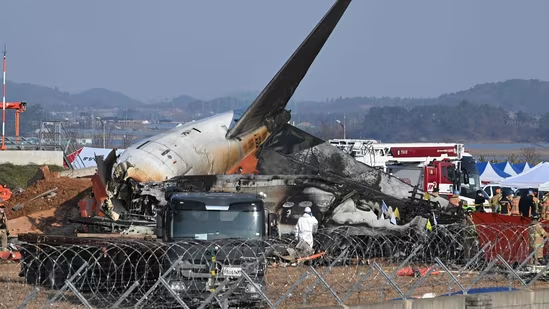On Monday, 30 Dec 2024, Ozi News Desk, (Sumit Joshi) :
South Korea’s acting President, Choi Sang-mok, ordered an emergency safety inspection of the country’s entire airline system, which will commence once recovery work on the Jeju Air crash is completed.
On Sunday, December 29, 2024, a passenger plane burst into flames after skidding off a runway at a South Korean airport and crashing into a concrete fence. Officials stated that the front landing gear of the aircraft apparently failed to deploy, resulting in the deaths of 179 people. This marks one of the worst aviation disasters in the country’s history.
The National Fire Agency reported that the fire was nearly extinguished, but emergency workers continued efforts to rescue passengers from the Jeju Air flight, which was carrying 181 people. The incident took place at an airport in Muan, around 290 kilometers (180 miles) south of Seoul. Emergency teams were able to rescue two individuals—one passenger and one crew member. To combat the fire, 32 fire trucks and several helicopters were deployed. The Ministry of Transport confirmed that the aircraft was a 15-year-old Boeing 737-800, which had arrived from Bangkok. The crash occurred at 9:03 a.m.
As of now, 177 bodies have been recovered, with 88 of them identified. Most of the passengers were South Korean, with two Thai nationals among the casualties. Thailand’s Foreign Ministry confirmed that both Thai passengers were among the fatalities.
The fire agency dispatched 32 fire trucks and several helicopters to control the blaze, and around 1,570 firefighters, police officers, soldiers, and other officials were sent to the site.
Both black boxes, the flight data recorder and the cockpit voice recorder, have been located, according to a transport official.
This tragedy ranks as one of the deadliest aviation disasters in South Korea’s history. The last major disaster occurred in 1997 when a Korean Airlines flight crashed in Guam, killing 228 people.



